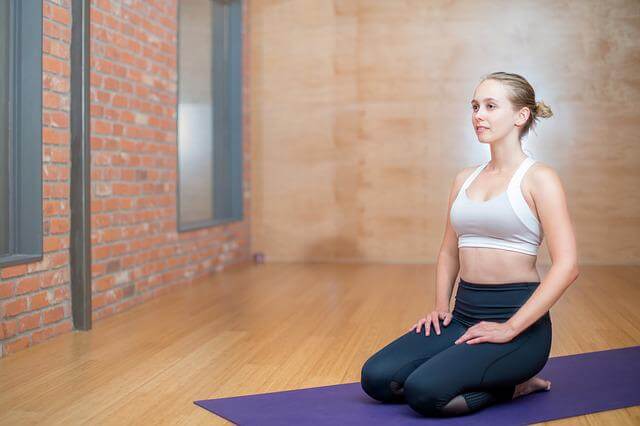As more and more people become interested in yoga, the demand for sustainable yoga mats has also increased. Yoga mats are typically made from PVC, a type of plastic that is not biodegradable and can take centuries to break down. This makes them a significant contributor to the growing problem of plastic pollution.
Fortunately, many sustainable options are now available on the market, made from materials like rubber, jute, and organic cotton. These mats are good for the environment and are often softer and more comfortable to practice.
In this article, we will be discussing the best sustainable yoga mats currently available. We’ll also provide tips on choosing a sustainable yoga mat and what to look for when purchasing.
Understanding “sustainability”
The term “sustainability” refers to the environmental aspects of green living. However, sustainability is a broader concept encompassing the environment and social and economic factors. Sustainability addresses current needs without jeopardizing future generations’ ability to meet their own.
Many people mistakenly believe that sustainability is only about environmental protection. However, sustainable development must consider all three sustainability factors to be truly effective. Only by addressing these factors can we hope to create a truly sustainable world for all by addressing these factors.
Deciding what matters to you on a yoga mat
A yoga mat is more than just a mat – it’s a tool that can help you connect with your practice and achieve your goals. But with all the different mats on the market, it can be tough to decide which one is right for you.
Here are a few things to consider when choosing a yoga mat:
– Material
Some mats are made of natural materials, while others are made of synthetic materials like PVC. Consider what material you want your mat to be made of and how it will affect your practice. Most yoga mats are made of PVC, a type of plastic. PVC is cheap and easy to clean, but it’s not eco-friendly. If you’re looking for a more sustainable option, look for a yoga mat made of natural rubber or jute. Rubber and jute fibers are durable and biodegradable, so it’s an excellent choice for the environment.
Texture
The texture of your yoga mat can also be important. Some mats have a smooth surface, while others have a more textured surface. If you want more stability during your yoga practice, choose a mat with a textured surface.
The mat’s thickness
There is no definitive answer to this question as it depends on personal preferences. Some people prefer a thicker mat for more cushioning, while others prefer a thinner mat for added flexibility. Ultimately, it is essential to choose a mat that is comfortable and suits your individual needs. For restorative yoga, a softer, more cushioned mat is advised, while for more therapeutic practices, thicker mats are advisable. You may want to purchase a yoga mat with a carrying strap for easy transport.
The pattern of the mat
The best pattern of the yoga mat is slip-resistant and has a textured surface to grip the floor when the poses get more strenuous.
Yoga props and equipment
Props such as blankets, straps, or blocks can help you perform certain yoga poses if you are not flexible enough or need additional support.
All of these factors will play a role in helping you choose the right mat for your needs. Take your time and consider all options before making your final decision.
The top four sustainable yoga mats
As yoga becomes more popular, there is a growing demand for sustainable yoga mats. Yoga mats are typically made of PVC, a type of plastic that is not biodegradable and can take centuries to break down. This makes PVC yoga mats a significant contributor to landfill waste.
Fortunately, several sustainable yoga mats are now on the market made of materials like bamboo, cork, and natural rubber. These mats are environmentally friendly and will degrade over time, making them a much better choice for yoga enthusiasts who want to reduce their impact on the planet.
#1. The Ultimate Complete Grip Beginner Set Yoga Mat
Made from natural rubber and jute, these eco-friendly yoga mats offer you excellent cushioning and grip so you may do your exercises with ease. The set includes the following:
- One complete grip 4mm yoga mat
- Yoga mat bag
- Yoga strap
- Two eco cork yoga blocks.
The customers have nothing but only good things to say about these mats. Charlotte writes that she’s absolutely obsessed with her yoga mat and bag, and Tom writes that it’s a high-quality product.
#2. Sustainable Eco-friendly Non-Slip Jute Yoga Mat
This eco-friendly complete grip yoga mat is featured in the green and ethical checklist in Vogue and The Guardian newspaper. This mat does not peel and flake like other mats in the market. It gives you a complete grip to focus and get more out of your yoga. A verified buyer writes that he has used several yoga mats in his 11 years of practice, but this sustainable, eco-friendly non-slip yoga mat is the best of them.
#3. Eco Jute Yoga Mat
This eco jute yoga mat is a trusty companion at home or in your studio. It’s made of 100 percent natural latex, is super grippy and nonslip, and gives a firm foundation for standing asanas. Wendy, a verified customer, writes that while so many yoga mats are bright and tacky, this mat is calm and attractive with a tactile surface and is a pleasure to use.
#4. Yoga and travel mat set
If you’re confused about the suitable thickness of yoga mats, Complete Unity’s yoga and travel mat set will give you the best of both worlds. Lucy, a verified buyer, writes that these mats traveled with her on a train for a holiday and are perfect for sitting, standing, or lying down and gushes that she’s a much happier yogi now.














